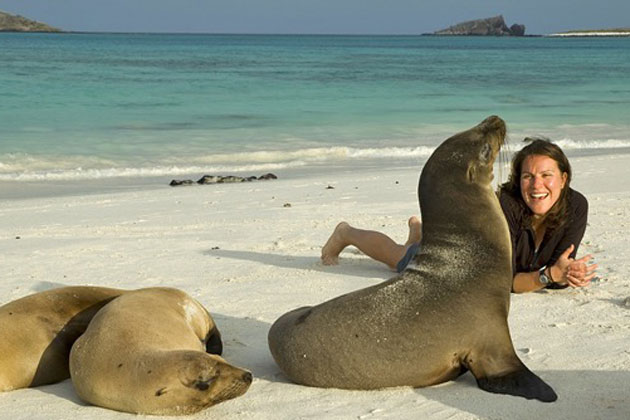‘We Are Galápagos’ Explores Human Life on the Islands
Documentary Offers a Peek into What People are Doing to Protect Their Home

The name “Galápagos” tends to conjure images of giant tortoises and sea lions swimming in pristine waters; cormorants, blue-footed boobies, and Darwin’s finches flying overhead and making their nests on the shoreline; and colorful land iguanas chomping on prickly pear cactus, all living in harmony in the equatorial Ecuadoran province that sits 600 miles from the mainland in the Pacific Ocean. While it’s true that the archipelago is rife with fauna, there is also a substantial human population, with numbers hovering around 25,000. It is the people who are the subject of UCSB professor Kum-Kum Bhavnani’s latest documentary, titled We Are Galápagos, which is getting its world-premiere screening at the Santa Barbara International Film Festival.
Bhavnani decided to make the film after a trip to the islands organized by her daughter’s school. “That is when I went to the Galápagos the first time,” said Bhavnani in a recent interview. “When we were circling above the airport before landing, Cerina, my daughter, looked out the window and said, ‘I didn’t realize there are people who live here.’ I hadn’t thought about people and the Galápagos.… It stayed with me forever and a day that if I didn’t know about the people living there, then maybe others wouldn’t know. I thought, ‘People make so many good films about the Galápagos; let me see if I can make a documentary about the people of the Galápagos.’” Three years and several visits later, We Are Galápagos was born. I recently spoke with Bhavnani, who has worked in the university’s sociology department since 1991, about her latest film — she has three others to her name — how it came about, and what she hopes audiences will learn from it.
How did you find your subjects? Some of it was through connections. There is an organization called Holbrook Travel, who are the travel agents who do these educational tours [in the Galápagos], and they were extremely good to me. They put me in touch with lots of [tour] guides and people who could help me get all the authorizations and permissions from the national park so that I could film … I was going to make a film through the eyes of the guide we had when I was there with my daughter. [But] he couldn’t do it [because of family obligations].… So I would stop guides on the street and say, “Do you know any guides who might want to be interviewed for a documentary?” And through that I met a whole load of guides … the second time I went, Ciada — the woman who forms the through line of the film — she was working in the hostel we were staying in, and I just asked her to be in it because I thought she was lovely.
How did you get into filmmaking? That also is rather strange, because when I did all this research for my class, the [students] pushed me; they wanted more recent examples and so on, quite rightly, so I did all of the research for my classes — I teach about women in the third world — The Shape of Water was about women creating social justice … And so I was writing a grant application to be able to write a book about all of this research I had done so that I could go and talk to women, and then I thought, “Oh no, this is a film; this is very visual; let me see if I can make a documentary. If I can, great; if I can’t then I’ll know I can’t.”
How was this film different from your other films? The Shape of Water was something I developed from my teaching. I did research for my lectures, and then I decided to make a film.… For Nothing Like Chocolate, I read about children being trafficked to harvest cocoa, and I thought, if I don’t know about this I’m sure others don’t. My philosophy has always been to see how people are making the world better — which isn’t to say we don’t need to know about what’s wrong with the world, but my approach is, “What are we doing about it?” … [Galápagos] I think is in line with my interests …. I realized I’m in the sociology department, and we don’t know anything about the people in the Galápagos. [Laughs.]
What do you hope people take away from this film? I do hope that the examples in this film, of what people are doing in the Galápagos to protect the environment and preserve the landscape and the nonhuman life as well as the human life — I really hope that all of us can get some ideas and learn from that and think of ideas for our own community.



